Matthew Lengthy friends over the facet of the analysis boat Calanus, into the darkish water of Hadley Harbor, about 2 miles from Woods Gap.
There is a meadow down there, in line with Lengthy, a marine chemist on the Woods Gap Oceanographic Establishment. Acres of a willowy inexperienced plant referred to as eelgrass.
Eelgrass is the dominant species of seagrass in New England, but it surely’s little-known and largely unsung. And no surprise — it is inconceivable to see from shore and barely seen from the boat.
However Lengthy assures me it is there. As his colleagues placed on scuba gear to gather samples, he ticks off the explanation why wholesome eelgrass meadows are important for the New England coast.
“They are a nursery habitat — quite a lot of younger fish and crustaceans and different organisms develop up in them,” he stated. “If we do not have seagrasses, we do not have bay scallops in any respect in these ecosystems.”
Eelgrass additionally protects in opposition to coastal erosion, Lengthy stated. The meadows soak up a number of the vitality from waves earlier than they hit the coast, and the vegetation’ roots assist stabilize mud and sand in coastal bays. Plus, they assist preserve climate-changing carbon out of the ambiance by storing it in sediment.
However this important plant is in decline. If scientists cannot discover a method to assist eelgrass flourish, the outcomes may damage fishermen and coastal communities.
Why seagrasses are vanishing
Within the Thirties, a illness killed virtually the entire eelgrass alongside the East Coast. The bay scallop fishery collapsed. The meadows took a long time to recuperate.
Now eelgrass faces extra threats from air pollution, improvement and local weather change.
Eelgrass thrives with a number of daylight and comparatively cool water. Alongside a lot of the East Coast, the water is rising hotter due to local weather change and murky from air pollution. The air pollution comes primarily from untreated sewage and fertilizer runoff that feeds algae overgrowth, an issue worsening with local weather change.
Conventional block-and-chain boat moorings current one other menace. They scar eelgrass beds because the chains drag alongside the ocean flooring.
Globally, practically 30% of seagrass habitat has vanished because the 1800s, in line with the Nationwide Park Service. Massachusetts has misplaced about half its eelgrass within the final 20 years. Now, scientists’ greatest estimate is that about 19,000 acres stay.
“Seagrasses are one of the vital threatened ecosystems on Earth, on par with coral reefs [and] mangroves,” stated Lengthy. “We have to protect these ecosystems.”
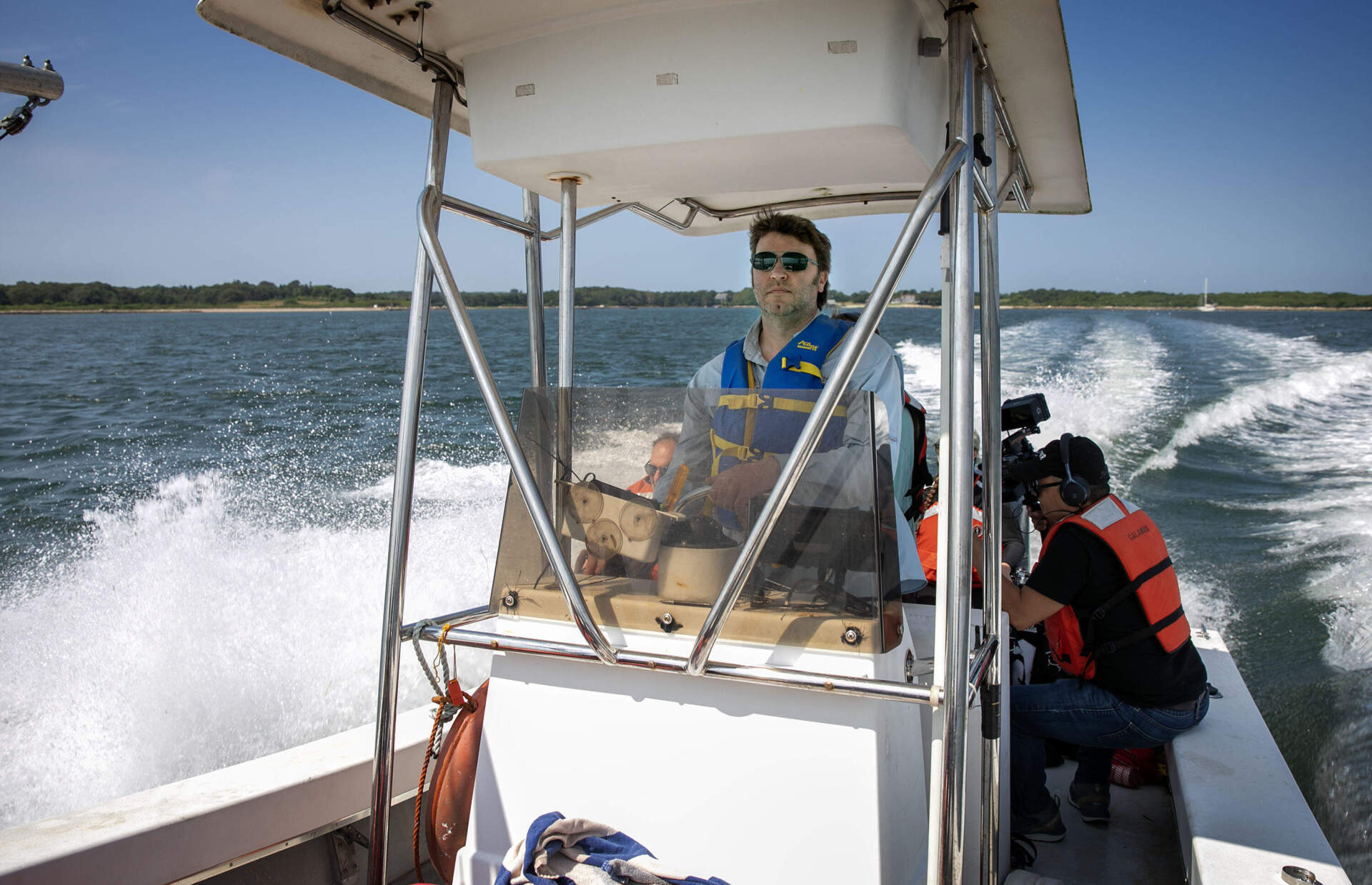
‘You solely defend what you’re keen on’
Lengthy is one of some dozen native scientists working to protect — and doubtlessly restore — New England’s diminishing eelgrass meadows.
One among Lengthy’s colleagues, Environmental Safety Company marine biologist Phil Colarusso, pops as much as the floor in his scuba gear with a handful of eelgrass shoots. They seem like lengthy, flat blades of grass.
“It grows just about just like the grass in your garden, besides it will probably get a lot, a lot bigger,” he stated — as much as 6 toes tall in some locations.
Colarusso has been learning eelgrass in New England for some 35 years and is one thing of a legend amongst native seagrass scientists. On this journey, he’s gathering knowledge to higher perceive eelgrass progress patterns and life cycles. He’ll mix that data with different knowledge to gauge the general well being of the meadow.
“Seagrasses are one of the vital threatened ecosystems on Earth, on par with coral reefs [and] mangroves.”
Matthew Lengthy
Colarusso stated the overall understanding of this habitat has dramatically elevated — a minimum of amongst scientists and coastal engineers — since he started learning it within the Eighties. However among the many public, eelgrass has a little bit of a branding downside; it lacks the colour of coral reels or the eerie charisma of mangrove swamps.
Which is why Colarusso has a second, unofficial job as an eelgrass cheerleader. He hosts public occasions geared toward making folks care about this rarely-seen underwater plant.
“You solely defend what you’re keen on, and also you solely love what you perceive,” he stated.
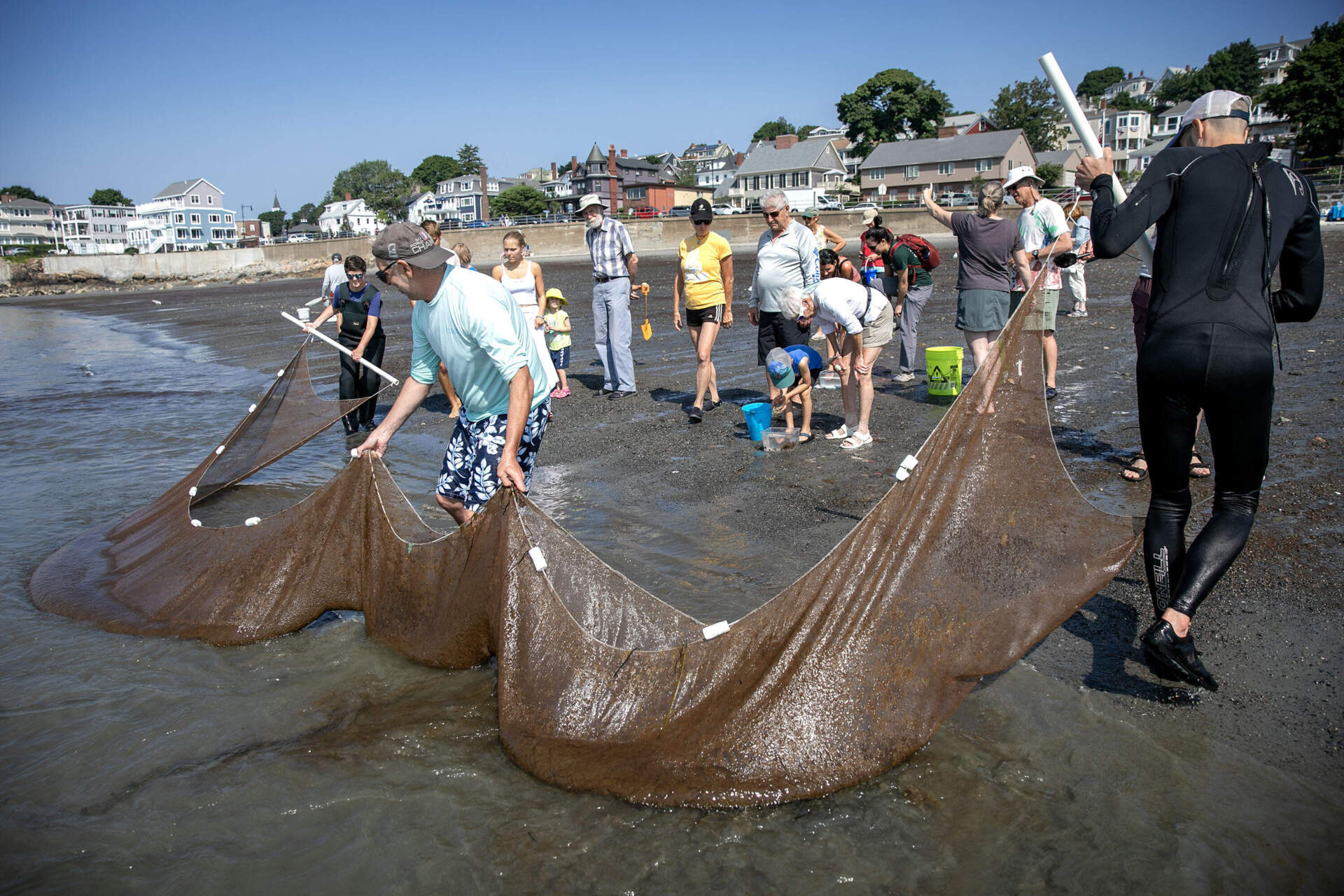
At one among these occasions in Swampscott final summer time, Colarusso and his colleagues dragged an enormous internet by way of an underwater meadow simply offshore, then unfold the web out on the seaside, so folks may see what lives within the eelgrass. A few dozen youngsters and their grownups gathered round. The children squealed with delight as they noticed child fish and crabs.
Swampscott resident Amy Mastrogiacomo stated she was shocked to study her city has one of many largest intact eelgrass meadows on the North Shore.
“My youngsters are like, ocean animal fanatics, and my son Mateo is actually a crab whisperer,” she stated. As if on cue, Mateo ran by holding a crab as large as his hand.
Close by, Mastrogiacomo’s 7-year-old cousin Valentina Cruz knelt on the sand and gently scooped a child fish right into a bucket. “I like fish,” she stated. “They’re good.”
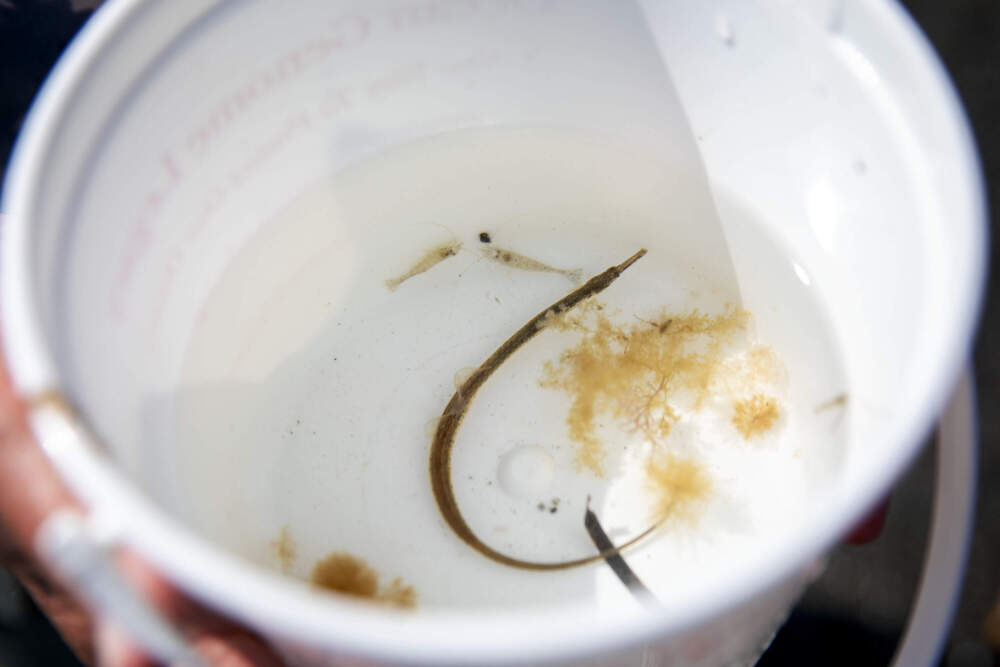
Northeastern College marine science professor Randall Hughes stood close by, answering questions. She’s pushing an effort to get eelgrass named the official marine flora of Massachusetts.
“Eelgrass could be very underappreciated — folks simply aren’t accustomed to it,” she stated.
Treasured diamonds
Swampscott’s giant meadow has adopted the development of many eelgrass expanses across the state, changing into smaller and extra fragmented in current a long time. “There’s quite a lot of work to revive areas the place it was, and simply preserve what now we have left,” stated Hughes.
As soon as eelgrass is misplaced, restoring it’s difficult. Traditionally, divers have transplanted particular person shoots by hand. It’s painstaking work that requires specially-trained divers, and it hasn’t been very efficient.
“There are specific issues you may’t management, and so the success fee isn’t nice,” Colarusso stated.
He recalled per week in Rhode Island in 2017, shifting vegetation from Newport to Greenwich Bay.
“We moved 16,000 shoots, one shoot at a time. And three weeks after we did that, a tropical storm got here up the coast and washed all the pieces away,” Colarusso stated.
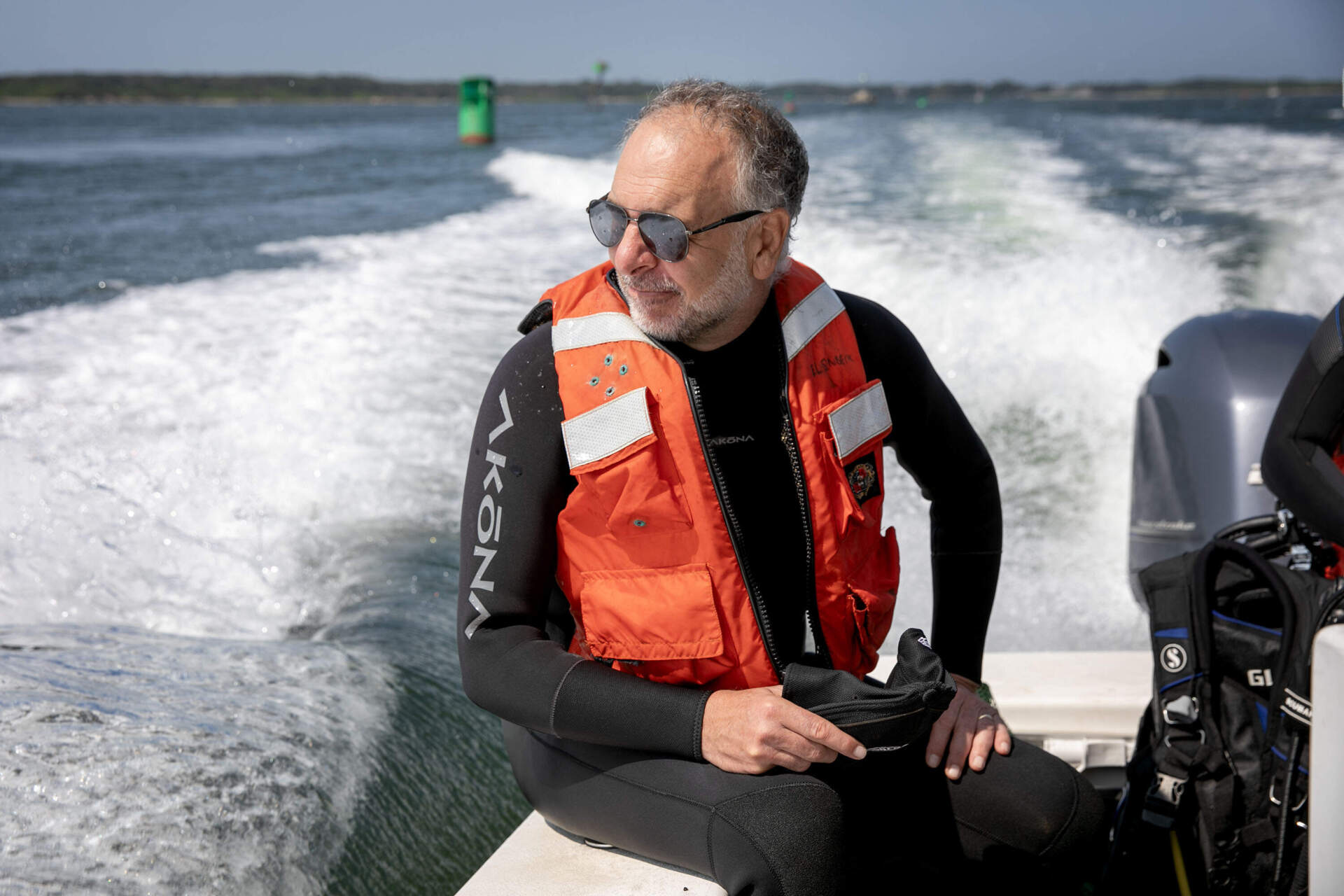
Even when there isn’t a pure catastrophe, the vegetation usually fail to thrive, stated Lengthy, the Woods Gap scientist.
He’s engaged on a undertaking on Cape Cod to develop eelgrass seedlings on platforms floating slightly below the water’s floor. There, they get extra gentle, giving the vegetation a greater shot at survival. However the fragile shoots will nonetheless need to deal with air pollution and local weather change as soon as transplanted, Lengthy stated.
“It’s actually essential to deal with the underlying stressors that prevented them from rising there,” he stated. “Except you tackle these elements, the seagrass is not going to come back again regardless of how arduous you [work to] restore them.”
There’s been some progress: Massachusetts just lately enacted new laws meant to scale back air pollution from nitrogen, which causes murky water, and is working with MassBays to check seagrass-friendly boat moorings. The state additionally has an eelgrass monitoring and restoration program.
Nonetheless, due to human-caused air pollution, improvement and local weather change, the eelgrass meadows are unlikely to recuperate on their very own. So researchers are engaged on new methods to present the vegetation a combating likelihood.
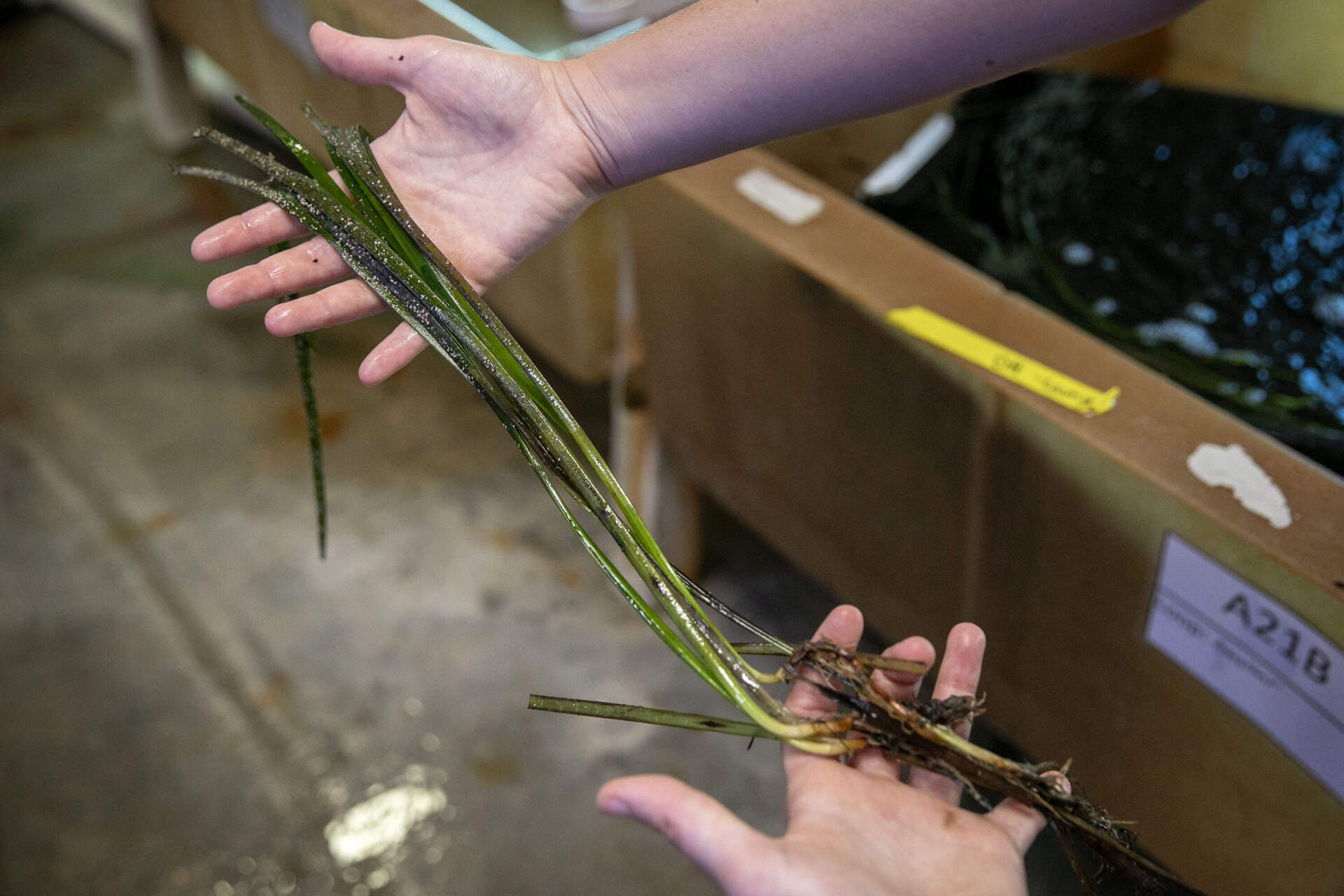
Probably the most profitable restoration undertaking to date befell in Virginia. There, scientists used eelgrass seeds as an alternative of vegetation. However this may be tough to scale up as a result of restoring a meadow can take hundreds of thousands of seeds, 12 months after 12 months.
Scientists merely don’t have that many seeds. But.
“One of many analysis tasks proper now could be to attempt to perceive, can our pure beds deal with us gathering that many seeds?” stated Hughes, of Northeastern. Scientists don’t wish to wreck one meadow to revive one other.
One other concern, Hughes stated, is ensuring the seeds will develop into thriving vegetation, particularly as water temperatures proceed to rise. Her lab is learning an idea referred to as “assisted gene circulation,” taking a look at whether or not seeds from southern vegetation, that are higher tailored to warmth, could possibly be utilized in New England. Different teams, together with the EPA and the Nationwide Park Service, are pursuing comparable tasks with each vegetation and seeds.
“It sounds nice and it is sensible, however we do not even have quite a lot of checks of whether or not it really works or not,” Hughes stated. “And there is the possibility that we may transfer unintentional issues with the seeds, like pathogens.”
Ecologist Mirta Teichberg is tackling the identical downside on the Marine Organic Laboratory in Woods Gap. She reveals off rows of fish tanks crammed with inexperienced shoots, and labeled with names like “Wings Cove” and “The Knob,” after the saltwater ponds and estuaries round Massachusetts the place the eelgrass samples had been collected.
Teichberg holds up a glass jar half stuffed with thick brown water.
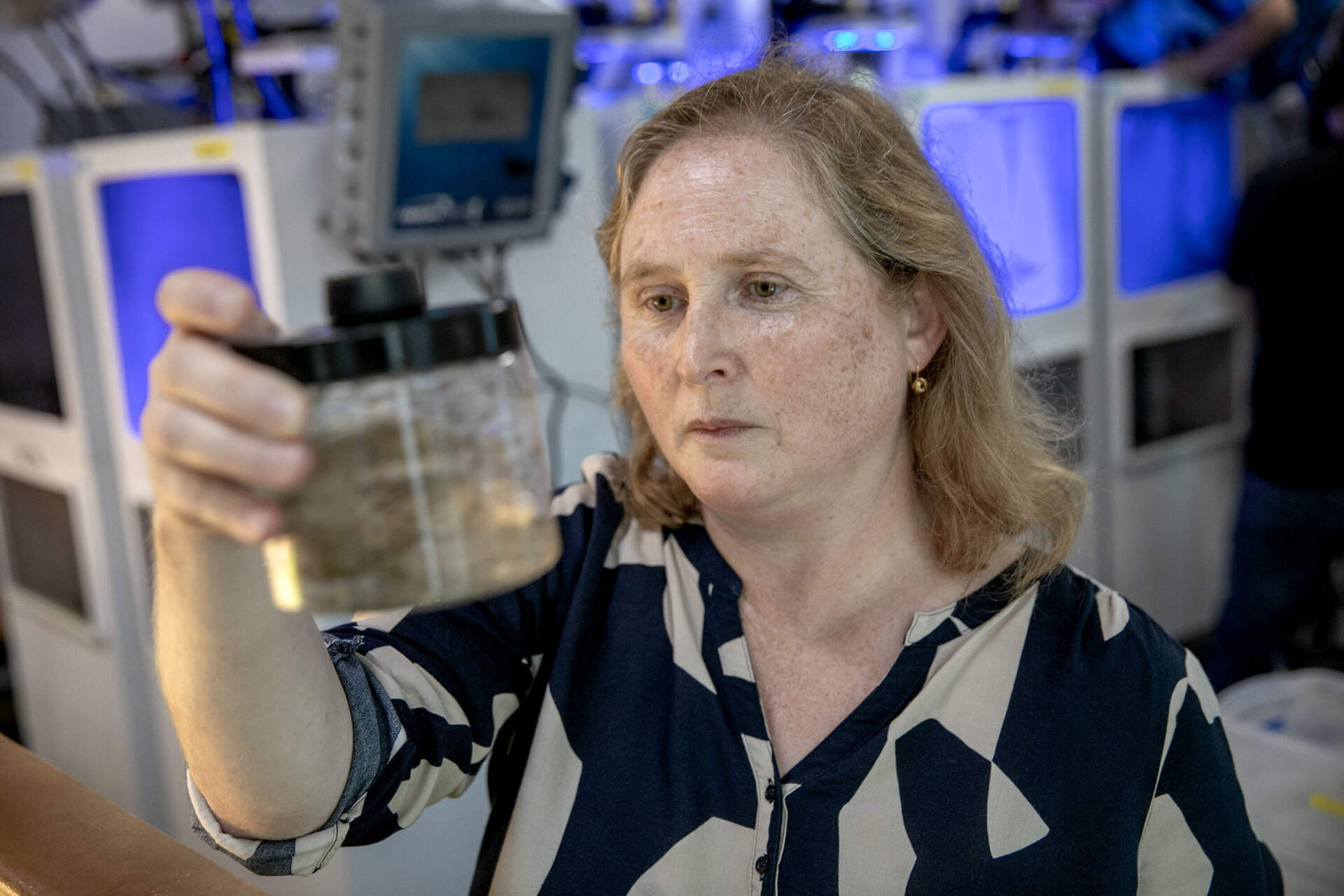
“On this jar there’s most likely about 100 to 200 seeds that we collected from the underside of the tank,” she stated, calling the seeds “treasured diamonds.”
Teichberg and her workforce will examine the seeds to see which sprout most reliably, and which could possibly endure hotter water.
“If we discover populations which can be resilient, we are able to propagate them within the laboratory,” she stated. “If we are able to get them to develop very well beneath sure situations, then possibly we are able to study one thing about what they should develop nicely. After which we are able to plan for restoration.”
Teichberg stated she tries to “assume like a seagrass,” imagining how you can assist the unheralded vegetation overcome obstacles in a hostile surroundings.
“Each step of the way in which, we’re attempting to assume, ‘What can we do to present them one of the best likelihood of surviving?’”
That is the second of two tales on challenges dealing with the New England fishing business. Discover the primary installment right here.

